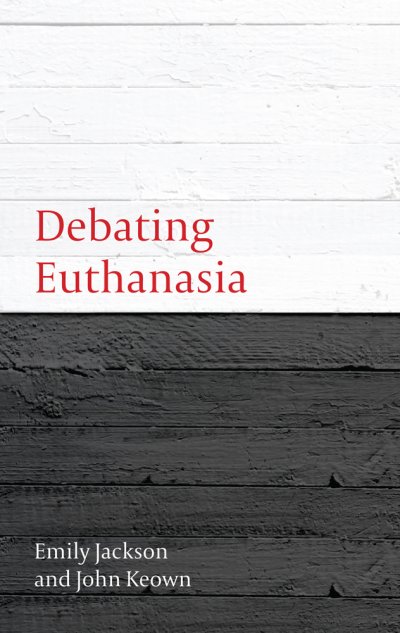Catholic Medical Quarterly Volume 62(2) May 2012, 43
Book reviews
Debating euthanasia by Emily Jackson and John Keown
Hart Publishing ISBN 978-1-84946-178-8
Reviewed by Pravin Thevathasan
 In
this highly readable work, Professor Emily Jackson first presents the
case for legalizing assisted suicide and voluntary euthanasia. The
arguments are well presented and they demand a cogent response. For a
small number of people, she argues, a good death is only made possible
by means of assisted suicide and in a pluralistic society people should
not be forced to endure a death they find intolerable. She cites the
case of a doctor who meets a patient for the first time and performs an
act of illegal euthanasia even though that patient might have been
depressed. This should not have occurred, she says, if there is legal
voluntary euthanasia with adequate safeguards.
In
this highly readable work, Professor Emily Jackson first presents the
case for legalizing assisted suicide and voluntary euthanasia. The
arguments are well presented and they demand a cogent response. For a
small number of people, she argues, a good death is only made possible
by means of assisted suicide and in a pluralistic society people should
not be forced to endure a death they find intolerable. She cites the
case of a doctor who meets a patient for the first time and performs an
act of illegal euthanasia even though that patient might have been
depressed. This should not have occurred, she says, if there is legal
voluntary euthanasia with adequate safeguards.
Professor Keown then presents the case against legalizing assisted
suicide and voluntary euthanasia. He argues that the safeguards in place
where euthanasia is already legal have been "illusory." In the
Netherlands, for example, being depressed or being tired of life is
reason enough for becoming a candidate for euthanasia. Besides, the
Dutch flout their own guidelines.
Keown also reminds us that clinicians are autonomous beings who make
specific clinical decisions. Why should they withhold euthanasia from a
patient who in their opinion requires it simply because the patient has
not requested it? The slippery slope is both a practical and logical
one. He further reminds us that Professor Jackson has already stated
prior to this debate that only certain human beings qualify as
"persons." Clinicians with this belief are unlikely to suffer disquiet
after disposing of "non-persons" who are unable to consent to their own
demise. One is reminded of the case of Tony Bland who was effectively
de-personalized by the Courts prior to being put to death.
Little wonder then that disability rights groups are among the
strongest to oppose legalizing assisted suicide and euthanasia. There is
a real alternative and this is excellence in clinical care.
Given that neither author read what the other wrote, the overall work is coherent and flows well. This work is informative and a welcome summary of the arguments for and against legalizing euthanasia.
